
¶ When the circles are becoming narrower, when societal mobility is minimised and the small world comes in focus, ideas about self-sufficiency and the homegrown might shoot up. An own garden, with plants, herbs and fruits. Closed and walled. Combine that with ideas about smart things, and stakeholders like Finnish company Plantui might become successful. They develop and deal with Hydroponic growth. Hydroponics is a way to grow plants in a closed controlled system, without soil and using a nutritious solvent.

¶ Hydroponics has a long history, and is related to various ways of experimental growing techniques. There are several varieties of hydroponic products, coming from different developers and companies. Everything from highly standardised systems that offer different products, kits and accessories, to more open-ended and do-it-yourself-style systems.
¶ The recent interest in hydroponics coincides with a growing attention for smart home products. Bosch’s Smart Indoor Gardening system eg. comes with the SmartGrow app, a way to gain smartphone interaction with plants and the gardening process.
¶ Software-controlled and networked cultivation systems are extensions of the development of domestic settings as experiment ground for engineers and product developers. The engineered domestic gardening systems might be seen as a continuation of the standardised home as machine, so often associated with architect Le Corbusier:
A house is a machine for living in. Baths, sun, hot water, cold water, warmth at will, conservation of food, hygiene, beauty in the sense of good proportion. An armchair is a machine for sitting in, and so on.
Le Corbusier (1986). Towards a New Architecture, (trans. Frederick Etchells). New York: Holt, Rinehart and Winston. page: 89.
¶ Or in a Swedish context, the standardised and machinic home, is often associated with the governmentally led Home Research Institute (Hemmens Forskningsinstitut, HFI) that from the 1940’s and onwards worked to standardise and improve the domestic working environments for housewives.
¶ There can be a tense relation between engineering and gardening. Gardens as well as the indoor cultivation of plants have had a contradictory relationship to engineering. How much can or should you organise, standardise and control something that lives, grows and is organic? To engage with a garden, means to follow certain rhythms, to deal with organisation and bordering, but also to be submitted to processes that you can’t fully control. As ethnologists Katarina Saltzman and Carina Sjöholm write in their research about domestic gardens: ”To live with a garden is to influence and be influenced by an environment; to form it and be formed by it.”[1] It is a constant negotiation about what to control and what to leave out of control. What should be fended off and prevented from coming into the garden, and what should be planted and introduced in the secluded ecosystem? And how should you let the garden influence you?
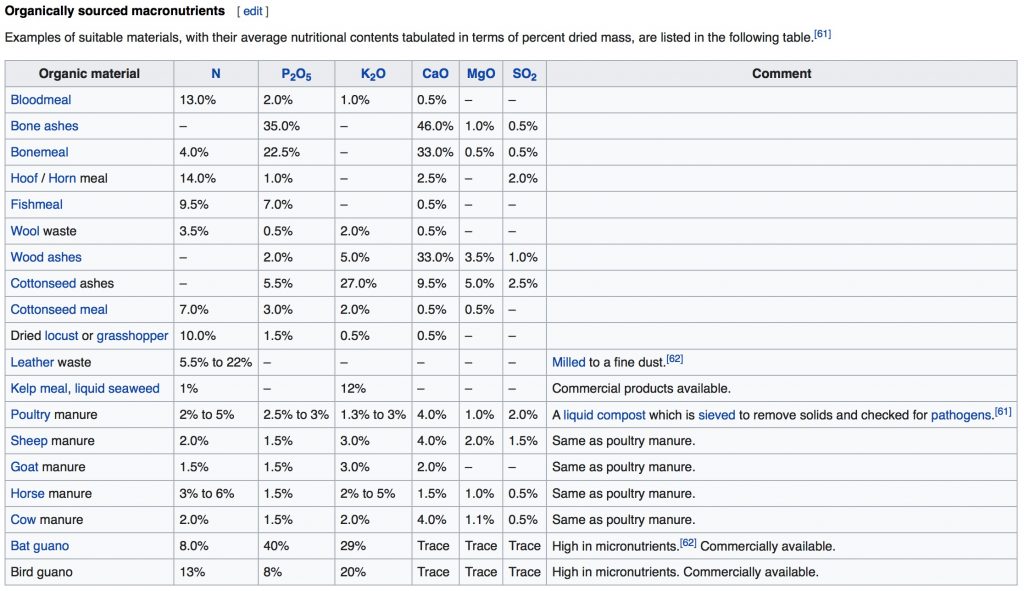
¶ During the last ten years, new technologies like hydroponics in combination with wirelessly controlled smart home appliances have opened up new associations between fuzzy concepts like nature and the artificial. In urban contexts, like eg. Dubai, the controlled indoor gardening based on hydroponics has been promoted as a way to reduce stress and to connect with nature.[2] When Jean-Charles Hameau, founder of My Green Chapter, an online garden center in Dubai, is asked by The National for his predictions about future tech and smart plants to come, he predicts a system that more or less creates its own atmosphere:
I predict that they will all be computer-operated, from planting the seed to harvesting crops. However, in my opinion, plants do need a certain degree of human interaction. In our smart garden, the seeds come in capsules with moss in it, but in the future, I can see seeds being in the form of an actual capsule or pill, which would be dropped in the water to sprout and create its own atmosphere.
https://www.thenational.ae/lifestyle/home/the-science-behind-smart-plants-and-why-they-suit-uae-homes-1.722823
¶ Hydroponics and related methods create closed controlled systems, somewhat disconnected from the spatial surroundings. Since no soil is used, concepts associated with gardening and cultivation, like terroir become irrelevant. Terroir, or the taste of place, is often used when describing how certain geographic locations offer special circumstances (soil quality, climate etc.) that give eg. a certain wine grape or cheese a special taste and quality.
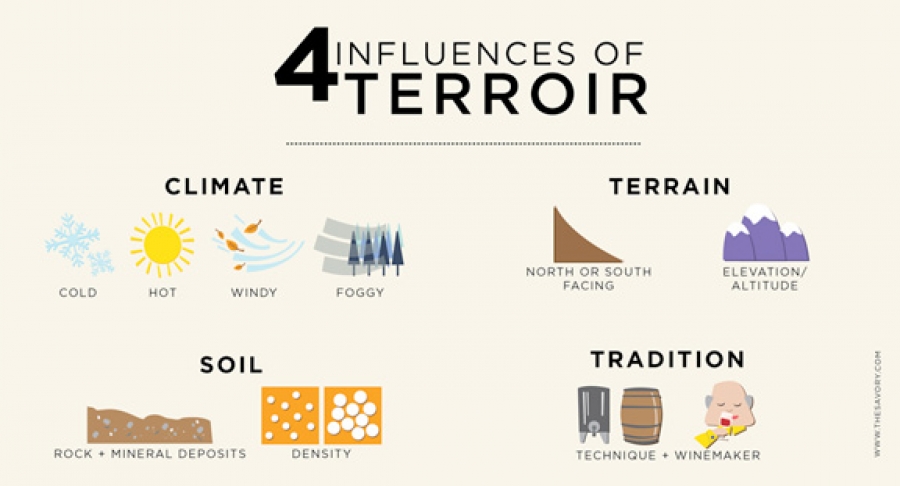
¶ Anthropologist Heather Paxson has written about terroir in relation to cheese production in the United States, and discuss how relations between products and place are framed as well as how ideas about autenticity and quality relates to standardised systems of certification and economic interests.[3]
Hydroponics and similar cultivation technologies challenge the ideas about terroir, in favour of standardisation and control. So, what would be the ultimate limit for terroir? There is not any specific terroir when growing plants indoor in pots. There is definitely no terroir in extraterrestrial space. This is instead the realm for artificial and scientifically controlled varieties of growth or gardening. The closed controlled environments of hydroponics have been utilized for space travel and for the very special domestic conditions in places like space stations and other extraterrestrial habitats.
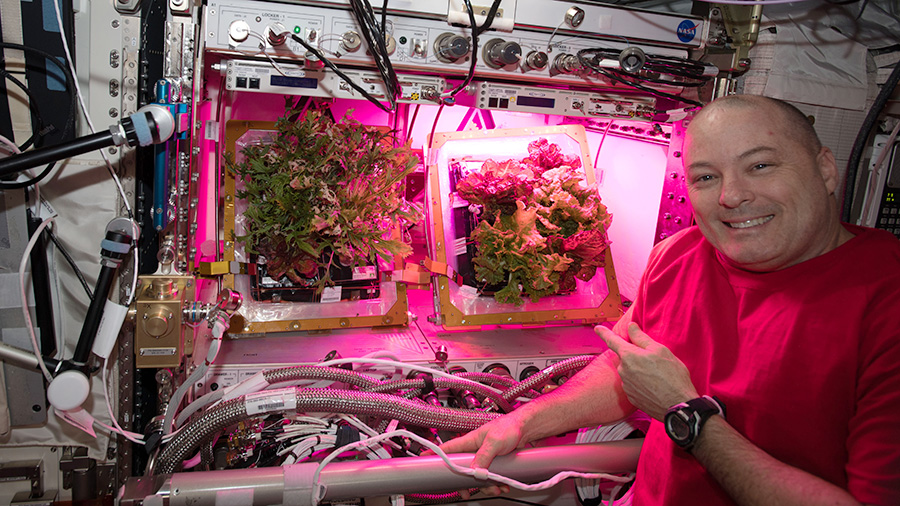
¶ In an article, published by NASA in 2018, PhD and plant physiologist Ray Wheeler talk about the plant chamber Veggie, developed for the International Space Station and possible future missions to Mars:
As NASA prepares the Space Launch System rocket and Orion spacecraft for Exploration Mission-1, it’s also turning its attention to exploring the possibilities of food crops grown in controlled environments for long-duration missions to deep-space destinations such as Mars.
Wheeler and his colleagues, including plant scientists, have been studying ways to grow safe, fresh food crops efficiently off the Earth. Most recently, astronauts on the International Space Station harvested and ate a variety of red romaine lettuce that they activated and grew in a plant growth system called Veggie.
Wheeler, who has worked at Kennedy since 1988, was among the plant scientists and collaborators who helped get the Veggie unit tested and certified for use on the space station. The plant chamber, developed by Orbitec through a NASA Small Business Innovative Research Program, passed safety reviews and met low power usage and low mass requirements for use on the space station.
https://www.nasa.gov/feature/nasa-plant-researchers-explore-question-of-deep-space-food-crops
¶ Plants cultivated beyond earth is a suggestive subject. Growing and preserving plants in space was also the theme of cult science fiction movie Silent Running, that premiered 1972. The plot of the movie was built around the idea of plants transported from earth in a space ship.
As this science fiction classic opens, botanist Freeman Lowell (Bruce Dern) has spent eight years aboard the space freighter ‘Valley Forge’ preserving the only botanical specimens left from Earth under huge geodesic domes. When he receives orders to destroy the project and return home, Lowell rebels and hijacks the freighter, while plunging the craft into the gaseous Rings of Saturn. From that moment on, he has only the trees, the gardens and two ‘Drone’ robots, Huey and Dewey, to keep him company on his greatest adventure of all.
https://www.youtube.com/watch?v=gBWO6oJStZk
¶ Silent Running and the theme of plants in outer space was the explicit inspiration for the design of one of the more spectacular data centers in Sweden, Pionen in Stockholm. The data center, located in a refurbished civil defence bunker under the city is run by company Bahnhof, one of Sweden’s largest internet service providers.
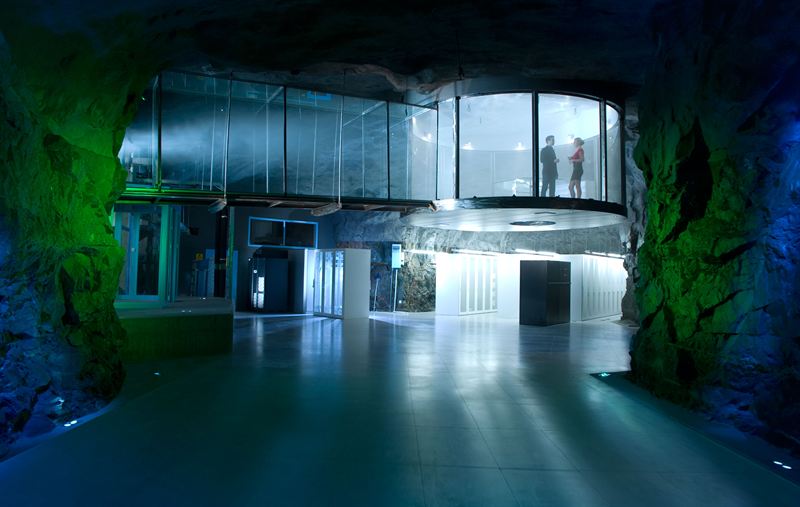
¶ In an interview with Wired, CEO Jon Karlung describe how he wanted to capture the computers-meets-plants vibe of Silent Running, and how the rationale behind the data center-design emerged :
The first thing Jon Karlung remembers about the sealed room inside the nuclear bunker he renovated six years ago is its murky odor. It smelled like a crypt. Then, looking around, Karlung’s crypt felt more like a flashback machine. “It looked like something from childhood,” he says. “With these ’70s green and orange colors. It was like a time capsule that had not been renovated or changed since the 1970s.” That bunker, called Pionen White Mountains is located just south of Stockholm. Nearly 20 years after Sweden’s Civil Defense decommissioned it, Karlung converted it into a data center. A few years ago, it was briefly the most famous data center in the planet — home to WikiLeaks.
And what a home it was; Karlung’s internet service provider, Bahnhof, took the nuclear bunker idea and went all-in. It now looks like a cross between a James Bond lair and the eco-pod-filled spaceships of the 1972 cult sci-fi film Silent Running. Karlung, who worked briefly as a film archivist before getting into the data-center business, says that he immediately thought of putting plants in the underground caves to capture the computers-meet-plants vibe of Silent Running. “It had this mood and it had this atmosphere that I liked. It captures this atmosphere of growing something from outer space.”
https://www.wired.com/2012/11/bahnhof/
¶ Karlung mention how the subterranean facilities of Pionen had the mood and the “atmosphere of growing something from outer space”. Controlled smart gardening and hydroponics might also have an outer space vibe or atmosphere. It might as well be used to support extraterrestrial living. In that sense, these methods of enclosed gardening has an outward-orientation. The mobile and contained garden is part of a life supporting system that makes it possible to move outwards, to even travel away from Earth.
¶ Smart gardening and hydroponics are however also closed systems or gardens. Closed gardens have an inward-orientation, implicated by the very word “closed”. The enclosed and walled garden that keep (possibly evil) things out and that protect what is inside. The walled garden can also be a symbol for introspective spirituality. The long European and Middle Eastern history of walled gardens even have a immediate connection to the etymology of the word paradise.
¶ The word paradise can, according to Wikipedia, be traced to the: “Latin paradisus, from Greek parádeisos (παράδεισος), from an Old Iranian form, from Proto-Iranian*parādaiĵah- “walled enclosure”, whence Old Persian 𐎱𐎼𐎭𐎹𐎭𐎠𐎶 p-r-d-y-d-a-m /paridaidam/, Avestan 𐬞𐬀𐬌𐬭𐬌⸱𐬛𐬀𐬉𐬰𐬀 pairi-daêza-.”
¶ The Garden of Eden as paradise can be derived from this etymology. Paradise as “walled garden”, as an enclosure, under control. During medieval times the walled garden was a common theme in Christian art, often referred to as Hortus Conclusus:
Hortus Conclusus is the Latin for an enclosed garden. The depiction of such a garden in Christian art from the Middle Ages onwards is often intended to suggest purity. The garden is frequently shown walled, so implying impenetrability. The image refers to the virginity of Mary, Christ’s mother.
The idea of the Hortus Conclusus is also associated with the Garden of Eden of the Old Testament.
https://www.nationalgallery.org.uk/paintings/glossary/hortus-conclusus

¶ The paradise-like walled garden has been a common theme with different guises throughout the history of gardening. Another enclosed garden is the greenhouse, which also has a long history. In the 18th Century the first glass-encased greenhouses were developed, leading to a new era of transparent enclosed gardens, and the beginning of industrialised artificial growing. Recently several tech-companies have chosen to design work spaces as contemporary greenhouses. One notable example is company Amazon’s Spheres in Seattle.
The Spheres are a place where employees can think and work differently surrounded by plants.
The Spheres are a result of innovative thinking about the character of a workplace and an extended conversation about what is typically missing from urban offices– a direct link to nature. The Spheres are home to more than 40,000 plants from the cloud forest regions of over 30 countries.
https://www.seattlespheres.com
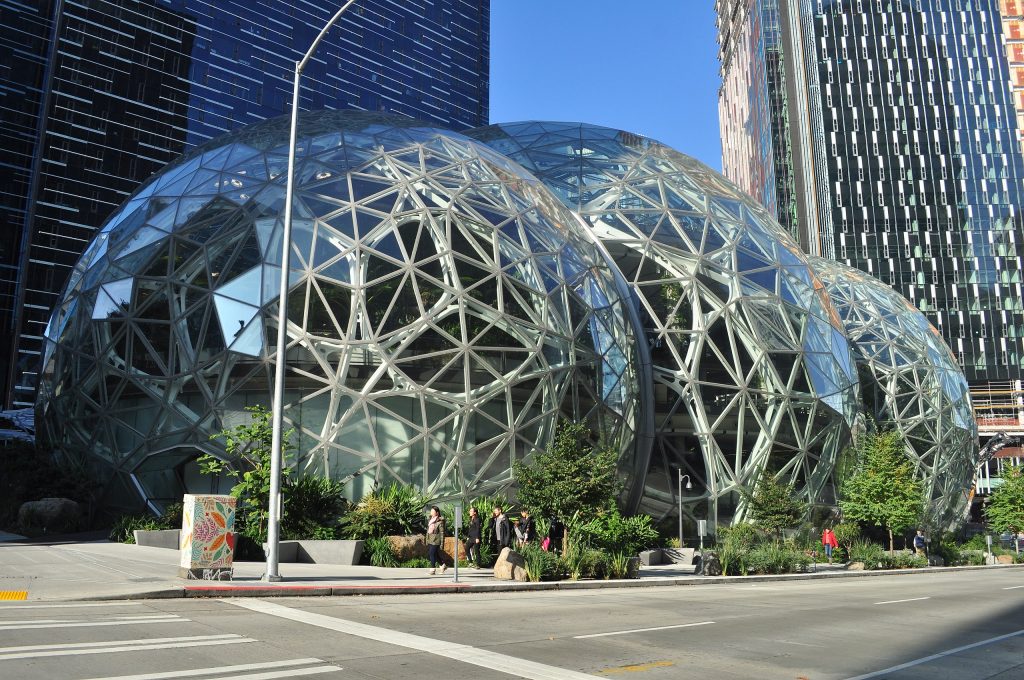
¶ Concepts like The Spheres somewhat remixes the idea of Walled Gardens and greenhouses as places for inward journeys and contemplation into spaces for ideation and creative work. Places where ideas and innovative work could flourish in the enclosed space of the greenhouse, in the atmosphere evoked by the co-presence of collected and juxtaposed growing organic specimens from faraway habitats.
¶ Within the digital economy around 2020, Amazon was one of five big US-based and extraordinarily powerful stakeholders. The other four, Google, Apple, Facebook and Microsoft were together with Amazon controlling the logic around digital communication and infrastructures. One thing the companies had in common were their ambition to build and maintain their own robust and profitable systems where their products and services could thrive. Sometimes the systems were referred to as ecosystems or platforms, but sometimes also as walled gardens. Even if the latter metaphor were used more seldom in 2020.
¶ The economical and strategical paradise for a company among “The Big Five” would probably be to be the owners and controllers of a walled garden. A space where they are in (total) control, where customers are kept in an enclosed space, among the products offered in this monetary Hortus Conclusus. But it is often hard to maintain walled gardens. And the walled garden is seldom the dream scenario for customers. You are submitted to the decisions, designs, whims and visions of the ones controlling the garden.
¶ There have been several examples of techno-economical walled gardens. Some successful, some less so. Many game consoles, like Sony Playstation, Microsoft XBox or Nintendo and SEGA have used walled garden-like concepts. Among the companies in The Big Five, Apple is famous for controlling compatibility in a way that is similar to a walled garden logic, where hardware, software and services are designed to operate and to be used in closed and controlled systems.
¶ There seems to be a constant oscillation between open and closed systems in digital economies. Open platforms or closed gardens? Or to twist the metaphors: Monolithic platforms or dynamic ecosystems? The question is what the next movement will be. In which direction does the pendulum swing? Will systems be more closed or more open? In 2020 The Big Five did run their own platforms, enmeshing different interfaces, micro services, collaborators and protocols. If taken altogether, the question is if the macro-ecosystem based on the entangled Big Five could be seen as a gigantic Walled Garden?
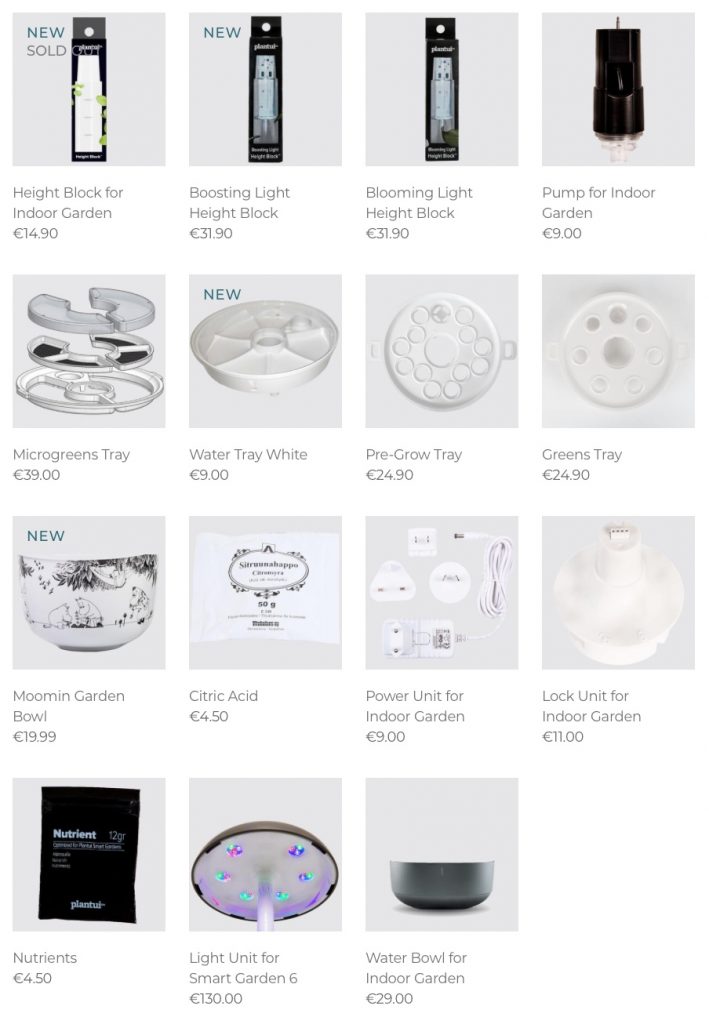
¶ Let’s move back to the beginning of this file, to the popularity of hydroponics and “smart gardening”. When it comes to the providers of hydroponic systems, there seems to be a preference for not only closed biological systems, but also for economical walled garden approaches. Systems by Bosch, IKEA or for that matter Plantui provide a number of compatible products in a controlled assortment. These doesn’t seem to be systems where third parties are let in, more than in strict collaborations (like Plantui’s collab with Moomin). In 2020, domestic hydroponic systems and smart indoor gardens were closed systems, enclosed technological gardens and product assortments. Biology, technology and economy in a possibly symbiotic relationship.
[1] Sjöholm, Carina, & Saltzman, Katarina (2016). Managing nature in the home garden. In Lesley Head, Katarina Saltzman, Gunhild Setten, & Marie Stenseke (Eds.), Nature, Time and Environmental Management: Scandinavian and Australian perspectives on peoples and landscapes. London: Routledge. (112-129). page: 126.
[2] A counterpoint to gardening practices as stress-reducing and nice ways to get in contact with Nature is offered by Abrahamsson and Bertoni in Compost Politics: Experimenting with Togetherness in Vermicomposting. They bring up the more messy aspect of domestic gardening and ask:
What practices emerge at the mundane interstices of the ‘big picture’ of a functional ecology? Wasting, eating, rotting, consuming, transforming and becoming-with are brought together in a variety of ways in practices of composting-with earthworms. Reporting on our own and others’ attempts to ‘live-together’ with earthworms, this paper tracks the non- relations and asymmetries of the transformations of more-than-human materialities inside (and outside) domestic composting bins.
http://environmentalhumanities.org/arch/vol4/4.7.pdf (Page 125)
[3] Paxson, Heather (2010). Locating Value in Artisan Cheese: Reverse Engineering Terroir for New-World Landscapes. American Anthropologist, 112(3), 444–457. https://doi.org/10.1111/j.1548-1433.2010.01251.x

